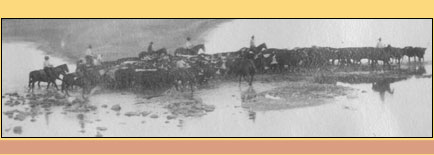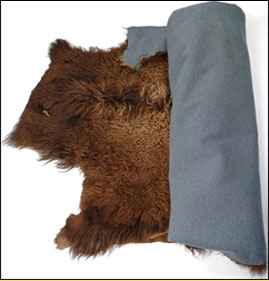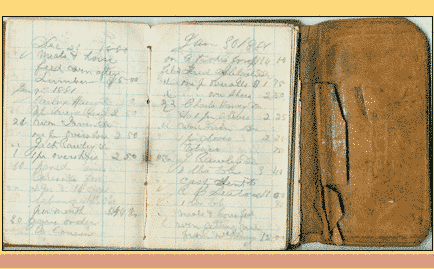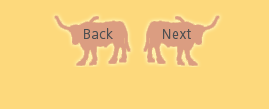


| Many people of diverse skills and backgrounds worked together at Grant Kohrs Ranch. Rancher, cowboy or ranch hand, head herdsman, cook, governess, chore boy, housekeeper, blacksmith, and nearby community members; all were necessary to the ranch's success. |
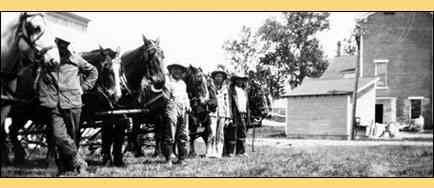
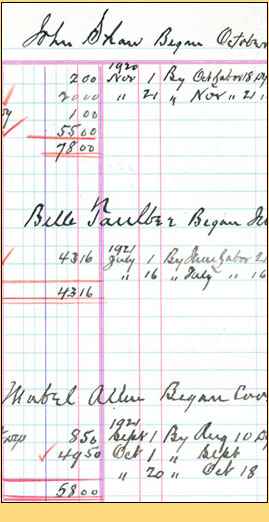
| The American cowboy was a product of the special needs of the open range cattle era. With few exceptions, it was a man's world. A drive from the railheads at Abilene, Texas to Dodge City, Kansas took 2-3 months. It took twice as long to bring cattle to Montana. Here they were fattened on rich grasslands before being trailed to the nearest railroad and shipped back east. A trail drive crew usually had 12 - 15 hands. They were led by an experienced foreman who knew the trails and where to find water and grazing. Chuckwagon cooks rose in the predawn dark to prepare meals. The wrangler, often a young cowboy just learning cow work, cared for the horses. In a well-equipped outfit, the wrangler also drove a bed wagon. Bedrolls weighed close to 40 pounds and were too heavy to strap on behind a saddle. In a smaller outfit, bedrolls were carried in the chuckwagon. Many of the cowboys, especially the Southwesterners, grew up cowboying. Some sought adventure from as far away as Europe. On a trail drive, they rode at four different locations around the herd. 'Point' riders were at the head, encouraging the lead cows in the right direction. 'Swing' riders on each side moved the front of the herd after the lead cows. 'Flank' riders, doing much the same job, followed farther back. 'Drag' riders, in the worst position, caught the dust as they brought up the rear and kept animals from lagging. |
